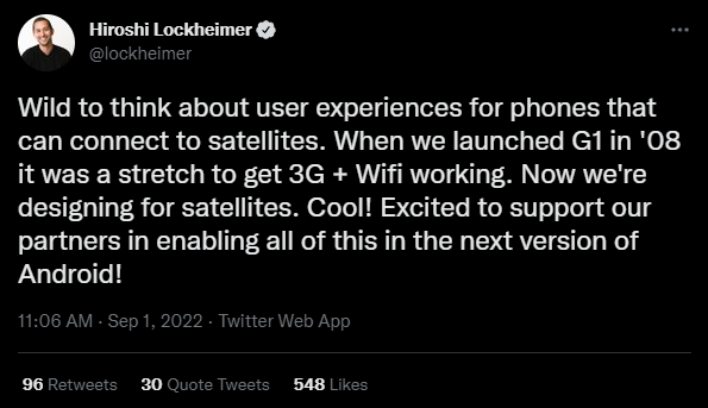Android 14 Will Learn New Tricks To Keep You Connected With Satellites

The announcement from T-Mobile and SpaceX aims to tackle one of the most frustrating mobile experiences – dead zones. Cellular coverage in general is better than it ever used to be, but still relies on ground-based towers. These rely on near line-of-sight coverage which makes mountainous terrain difficult to cover. Towers also have limited range and cannot be built in places with restricted land usage. Many parts of America lack the infrastructure to support cellular towers, let alone around the world.
Cell phones will necessarily depend on terrestrial towers for the foreseeable future, but it does not hurt to have a backup. Satellite phones have traditionally been clunky to use with limited capabilities. Many satellite systems operate at higher orbits which introduce significant latency as well. This is one area SpaceX’s Starlink Low Earth Orbit (LEO) satellites aim to improve.
The companies’ plan is to start with text messaging. Even if connectivity is established, satellite connections will typically be low bandwidth to start. The service will support SMS, MMS, and other participating messaging apps when it goes live sometime next year across most of the US. Voice and data coverage is expected to be added down the road, all with the existing radios in phones.

The expanded capabilities may be buoyed by the latest news from Google’s Lockheimer. The Senior Vice President of Android, Chrome, ChromeOS, and Play stated in a Tweet, “Wild to think about user experiences for phones that can connect to satellites. When we launched G1 in '08 it was a stretch to get 3G + Wifi working.” After reminiscing about the early challenges, he went on to say, “Now we're designing for satellites. Cool! Excited to support our partners in enabling all of this in the next version of Android!”
Previously, T-Mobile and SpaceX stated their service would “just work” using current phones. The technology uses T-Mobile’s mid-band spectrum, though this revelation potentially opens up the concept to more providers. Additional players in the space have yet to come forward, but we expect this solution to prove popular. Long haul tuckers, through hikers, and other users who frequent remote areas will certainly appreciate having the additional coverage.

